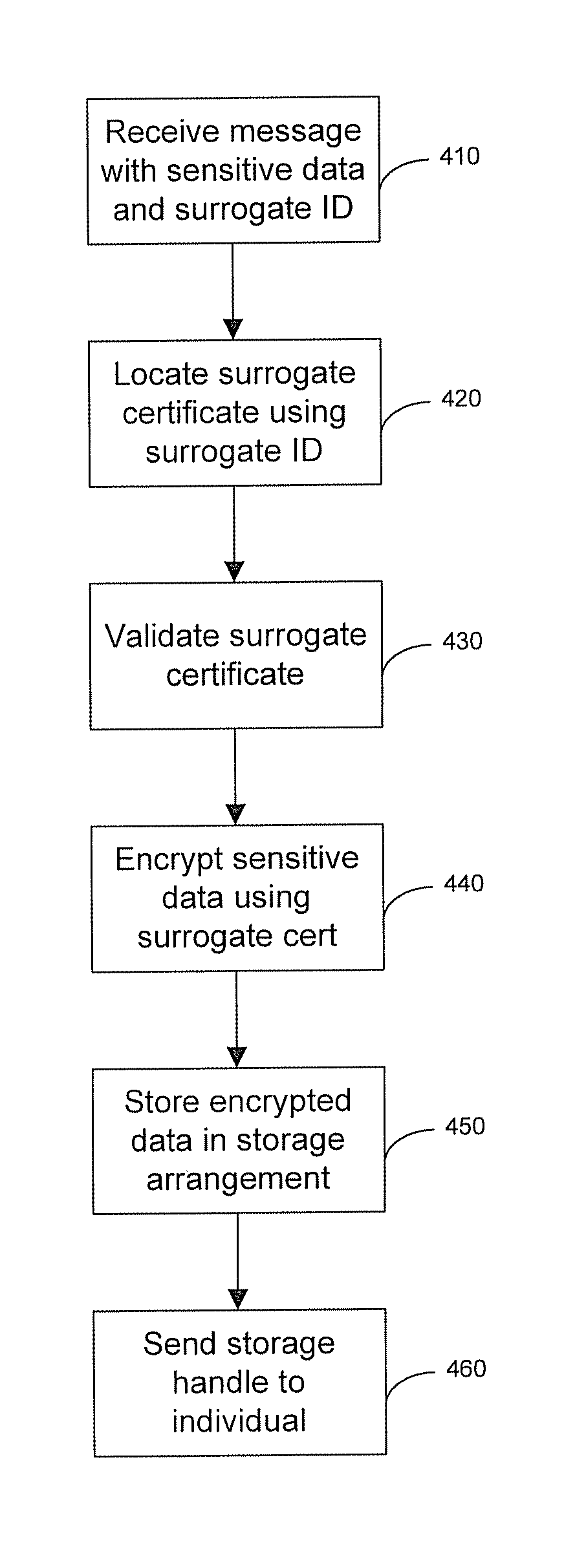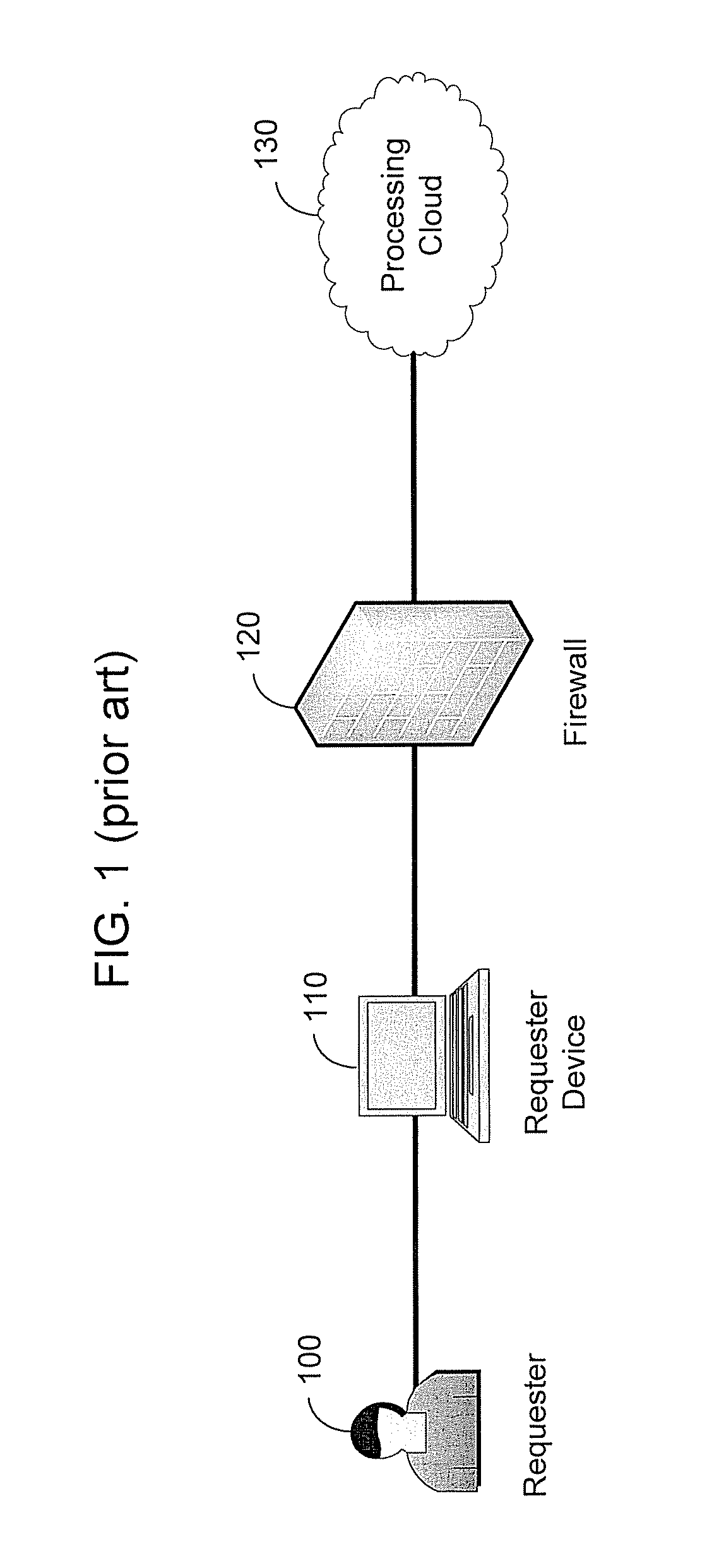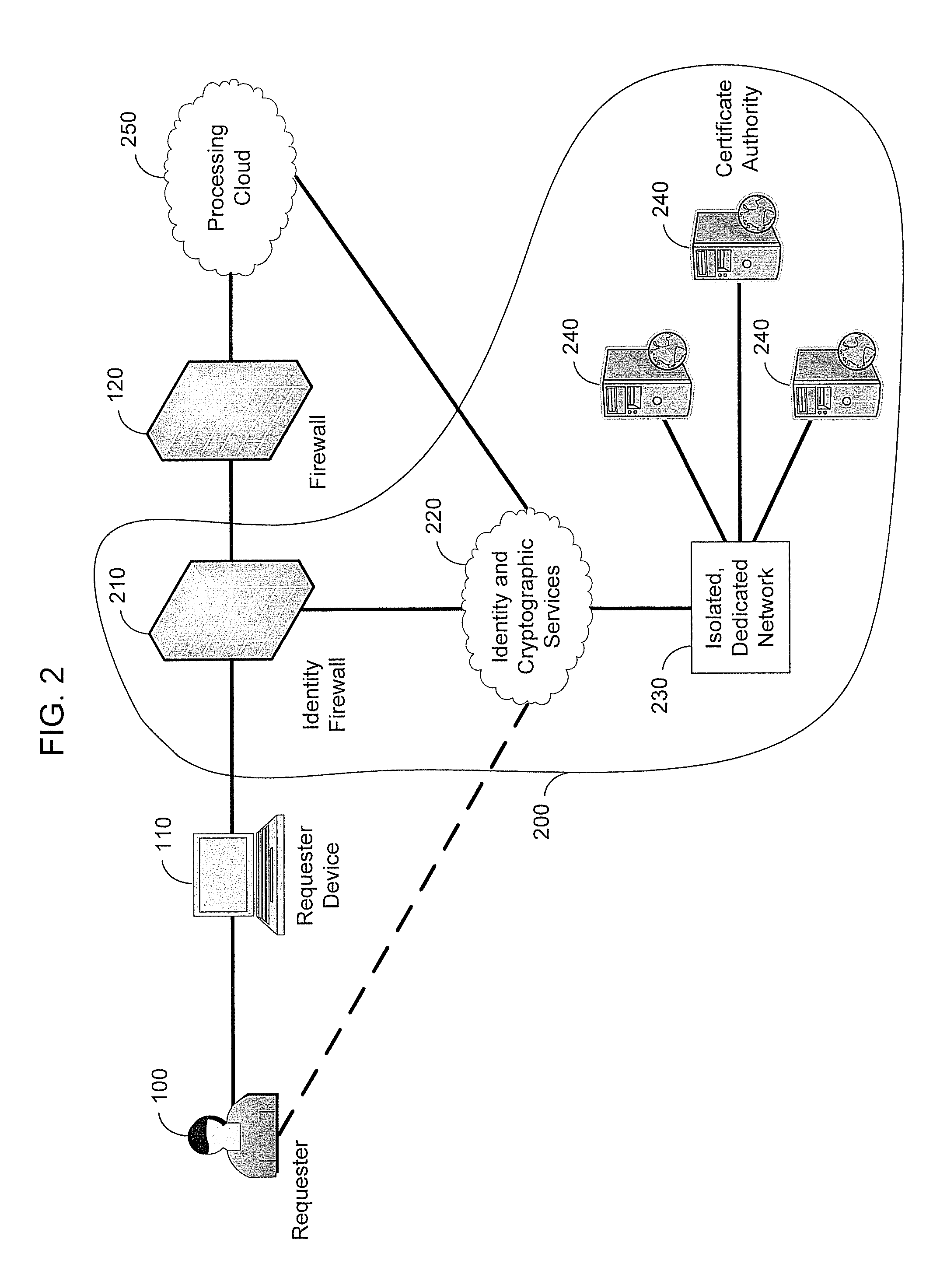Efficient, secure, cloud-based identity services
a cloud-based identity and efficient technology, applied in the field of cloud computing, can solve the problem that it is impossible to compromise communication between a sender and a recipient through a man-in-the-middle cryptologic attack
- Summary
- Abstract
- Description
- Claims
- Application Information
AI Technical Summary
Benefits of technology
Problems solved by technology
Method used
Image
Examples
Embodiment Construction
[0028]Definitions. As used in this description and the accompanying claims, the following terms shall have the meanings indicated, unless the context otherwise requires:
[0029]A cloud is a computing environment in which computing resources, such as processing capacity, memory, non-volatile storage, and network connectivity are distributed among a number of different processing centers. Computing clouds perform computing services, such as data archiving, electronic commerce, large-scale collaborative computations and the like on behalf of requesters. Clouds abstract the details of how those services are performed from end users who may require them. Clouds are often implemented using an interconnected network of computers, as is known in the art of scalable computing. Various embodiments of the present invention use an Identity Ecosystem Cloud (IEC), as that phrase is described herein.
[0030]A matched key is an “encryption key,” as that phrase is understood in the prior art of asymmetr...
PUM
 Login to View More
Login to View More Abstract
Description
Claims
Application Information
 Login to View More
Login to View More - R&D
- Intellectual Property
- Life Sciences
- Materials
- Tech Scout
- Unparalleled Data Quality
- Higher Quality Content
- 60% Fewer Hallucinations
Browse by: Latest US Patents, China's latest patents, Technical Efficacy Thesaurus, Application Domain, Technology Topic, Popular Technical Reports.
© 2025 PatSnap. All rights reserved.Legal|Privacy policy|Modern Slavery Act Transparency Statement|Sitemap|About US| Contact US: help@patsnap.com



